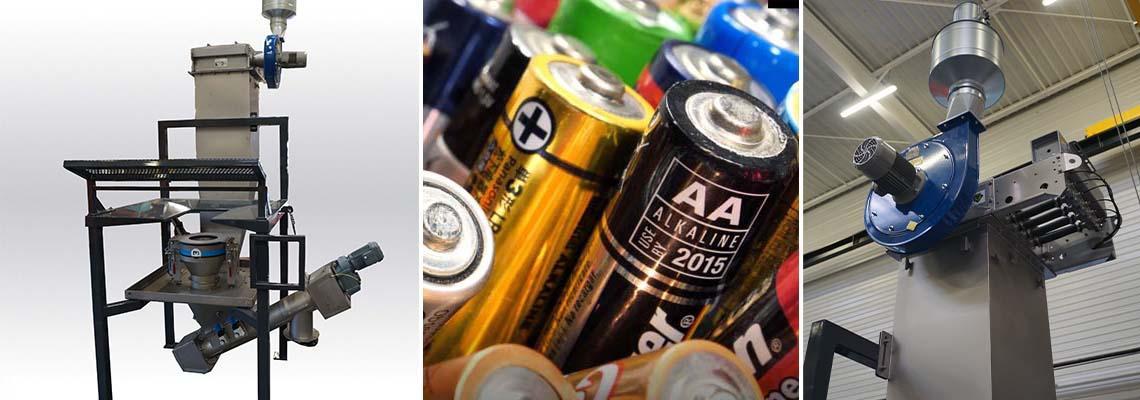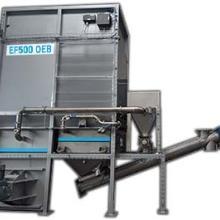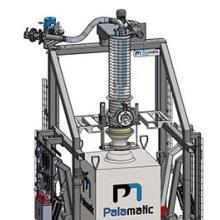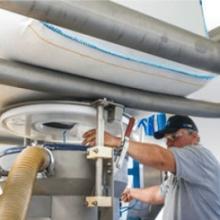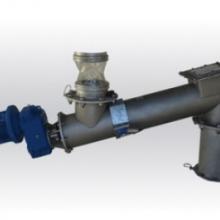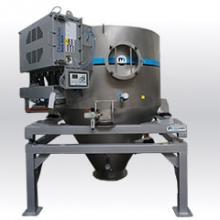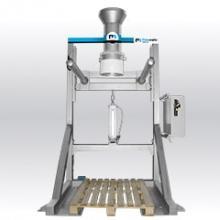Unloading and filling of manganese dioxide big bags
Material: Lithium nickel potassium oxide
Objective: Material unloading and filling operations for big bags, as well as material conveying equipment to downstream production process.
Our client, one of the world’s largest manufacturers of rechargeable battery technologies, approached Palamatic Process with the requirement of designing big bag handling equipment for lithium nickel potassium oxide. This material is known for its acute toxicity and can cause severe eye damage, skin irritation, respiratory irritation, suspected carcinogen, etc. Therefore, our client needed to make sure all components of the big bag unloading and filling stations were designed to fully contain and filter any dust, as well as keep the work area safe for their operators.
Project scope of supply:
- Big bag unloading station
- Material flow aids
- Dust filtration
- Conveying equipment
- Big bag filling station
1. Big bag unloading station
The central piece of equipment the project was built around is the Palamatic Process FIBC unloading unit - Low structure EasyFlow® 125. Designed with a telescoping connection head, the big bag discharge spout is held firmly in place between the clamping plate and the double-jacketed material flow tube.
The clamping mechanism provides a dust tight connection between the big bag spout and the unloading station during material discharge.
In order to guarantee the operator does not forget to clamp the big bag in place before untying the spout, two inductive sensors are placed on the clamping plate to indicate whether it is in the open or closed positions.
Because the height clearnace of the work area was restricted, our design office implemented a low structure electrical hoist on a trackway to minimize the overall height of the super sack emptying station.
The double-jacketed flow tube allows the material to flow freely through the center / inner tube and air volume to escape through the outer tube. A dust collection nozzle can be integrated on the outer tube for further dust containment and filtration. Below the big bag material flow column is an integrated hopper for material collection and conveyance. The station’s contact parts were made out of 304 stainless steel and the support structure was made from painted carbon steel.
2. Material flow aids
Because the material can have poor flow properties, the client needed to make sure the equipment could safely and reliably discharge the material from the big bag without manual intervention.
One of the main advantages to the Easyflow EF1 clamping style big bag unloader is the ability to clamp the discharge spout and lower the connection via a pneumatic cylinder, which causes the big bag to stretch. The clamping plate is supported by a telescoping tube that can be raised or lowered. By clamping the bottom of the big bag in place and lowering the clamping plate, a funneling effect is created at the bottom of the big bag. Compared to sitting on a tray, the bottom of the big bag is squared off creating trap points and arching issues with the material inside the FIBC. The operator must take care as to not put too much tension on the big bag when lowering the telescoping tube. By eliminating the big bag tray, we create downward sloping angles on the bottom of the FIBC which allows the material to have an easier time flowing out of the spout.
Also integrated into the super sack discharge unit were two upper pneumatic massage paddles. When engaged, the paddles squeeze the sides of the big bag, further promoting material flow. This helps break up any potential issues known as “rat-holing” where the material clings to the sides of the container while a hole forms directly above the material discharge outlet. By pressing against the side walls of the big bag, the material collapses inward and down the discharge spout.
In order to keep the material moving through the collection hopper just below the big bag station, four vibrating bin aerators are placed on each side of the hopper. These material flow aid devices work via a flat rubber disc located on the internal walls of the hopper and a pressurized air connection on the outside. When air is forced through the rubber discs, they vibrate and allow air to escape around them. The vibration and introduction of air flow helps break up the material particles to create a downward gravity flow.
3. Dust filtration
Due to both the toxicity of the material and its overall high value, the client required a way to both keep the work environment safe as well as keep as much of the material in the process.
By integrating dust filtration units on the sides of the big bag emptying equipment, Palamatic Process designed the material collection hoppers to be diverted back into the main collection hopper just under the big bag station. The filters pull a vacuum from the double-jacketed tube mentioned earlier, and brings any light and fine particulates to a high performance H14 filter. A reverse jet pulse air cleaner helps keep the filter cartridges clean from excessive build up of dust. Once the compressed air is sent through the filters, the dust falls through the bottom of the dust filter housing and re-introduced into the main collection hopper.
Downstream of the big bag unloader is a pneumatic conveying receiver, also called a cyclo-splitter. Below the big bag unloading stations the material is blown via pressure conveying to the receivers, which are installed on load cells to automatically and in real time read how much material is being collected. Another dust filtration system is built into the cyclo-splitter to help separate the clean air from the material. The same reverse jet pulse technology is used to help keep the filters clean and reclaim as much material as possible.
4. Conveying equipment
After unloading the lithium nickel potassium oxide from the super sacks, the next step was to take the material from the collection hopper and transfer it to a pneumatic conveying line. In order to feed the pneumatic conveying line, a 4-foot-long tubular screw conveyor with a flow rate of 7 TPH was integrated into the bottom of the hopper. To enhance the safety of the system, a rotation sensor was installed on the end bearing along with air purge seals. The cyclone receiver, or cyclo-splitter, was used to separate the air from the material at the end of the pneumatic conveying line. Load cells allowed the conveying system to read how much material was being collected in real time. More vibrating aerators were installed on the cyclone collection to help keep material moving out the discharge outlet of the equipment
5. Big bag filling station
In the client’s facility there was also the need for filling and packaging big bags. The operation needed to be conducted in a dust tight and safe manner. The rates required were on the lower end and the need for automated features were not necessary.
Cost was the main driver for this equipment, so our experts chose the Flowmatic 02 big bag filling station, an economic yet safe solution for operations involving the loading of material into super sacks.
The features on this big bag handling equipment include:
- An inflatable seal for a dust tight connection between the filling head and the big bag inlet spout
- Double jacketed filling tube to allow the material to air volume balance and connection to dust filtration unit
- Big bag hanging forks
- Pneumatic cylinder to raise and lower the big bag on the station
- Load cells to read the amount of material going into the big bag.
Further services provided was the on-site technical support for install supervision and commissioning of the project.
Palamatic Process has been supplying the powder and bulk solids industry with big bag handling equipment since 1992. In order to determine what solution is best for your project, contact one of our sales engineers. Together, our team of experts can provide the right kind of powder filling equipment that will fulfil your every production goal. Contact one of our experts today for assistance with needed material handling solutions and to request a quote.














